2D Shapes Teaching Resources
Bring dimension to 2D shapes for elementary students with printable worksheets, digital activities, math games and more — created by teachers for teachers!
This comprehensive collection of teaching resources includes editable curriculum-aligned lessons on two-dimensional shapes, all ready to be printed and used in the classroom. Explore the entire collection to find educational games, geometric activities, posters and vocabulary word wall cards to assist your students when they are learning to identify 2D figures by their names and their attributes.
Teaching this part of the math curriculum for the first time in a while? Read on for a primer from the teachers on the Teach Starter team.
What Are 2D Shapes?
Two-dimensional shapes, or 2D shapes, are shapes that have only length and width, but no depth. Each of these geometric shapes has its own unique characteristics and properties, such as the number of sides, the types of angles and the relationship between the sides and angles.
For example, a square has four equal sides and four right angles, while a circle has no sides and no angles.
Teaching about 2D geometric shapes is crucial in those early primary grades as these are the building blocks of more complex geometric concepts. Understanding them is an important foundation for developing spatial reasoning skills. It will also lay the groundwork for learning about symmetry, angles, perimeter and area, among other geometry and measurement concepts.
2D Shapes — A Kid-Friendly Definition
Looking to provide a simple definition for your primary-grade students? Here's a kid-friendly definition you can use:
A 2D shape is a flat shape that has only two dimensions — length and width. When something is two-dimensional, it's flat, like a drawing or a picture on a piece of paper.
Understanding 2D shapes is important because it helps us recognize and describe the shapes we see around us, and it can also help us with math and other subjects.
2D Shape Examples
A definition is a good start, but providing concrete examples will help students begin to wrap their heads around these two dimensional-objects!
Let's look at some common examples of 2D shapes that we teach in elementary school:
Square
A square is a 2D shape with four straight sides that are all equal in length and four right angles. It is a type of rectangle and a type of parallelogram.
Rectangle
A rectangle is a 2-dimensional shape that has four straight sides. Unlike a square, a rectangle has two sides that are longer than the other two. It has four right angles and opposite sides that are parallel and equal in length.
Parallelogram
Like a rectangle and square, the parallelogram has four sides and is considered a 2D shape. The four straight sides of a parallelogram are parallel to each other. Opposite sides of a parallelogram are equal in length, and opposite angles are equal in measure. Squares, rectangles, and rhombuses are all examples of parallelograms.
Trapezoid
A trapezoid is a quadrilateral shape with two parallel sides and two non-parallel sides. The parallel sides are called the bases of the trapezoid, and the non-parallel sides are called the legs. Even though a trapezoid has four sides, it is not a parallelogram!
Triangle
A triangle is a two-dimensional shape that has three straight sides and three angles. The angles of a triangle always add up to 180 degrees.
Circle
A circle is a 2D geometric shape that is round and has no straight sides. It is defined as the set of all points in a plane that are at a fixed distance (called the radius) from a single point (called the center).
Ellipse
An ellipse is a 2D shape that is similar to a circle, but its shape is stretched out or elongated. It is defined as the set of all points in a plane whose distances from two fixed points (called the foci) add up to a constant value.
Pentagon
A pentagon is a 2D shape that has five straight sides and five angles. The word "pentagon" comes from the Greek words "penta" (meaning "five") and "gonia" (meaning "angle"). Each angle of a regular pentagon measures 108 degrees, and the sum of the angles in a pentagon is 540 degrees.
Hexagon
A hexagon is a 2D shape that has six straight sides and six angles. Each angle of a hexagon measures 120 degrees, and the sum of the angles in a hexagon is 720 degrees. Snowflakes are a common example of hexagons found in nature, and so is the honeycomb!
Rhombus
A rhombus is a 2D shape with four straight sides that are all equal in length. It is a type of parallelogram, and it has opposite angles that are equal in measure.
Octagon
An octagon is an eight-sided 2D shape. A stop sign is an octagon that students might recognize from seeing it along the road on the way to school.
Quadrilateral
A quadrilateral is a 2D shape with four sides and four angles. The sum of the interior angles of a quadrilateral is always 360 degrees. The following are all examples of quadrilaterals:
- Square
- Rectangle
- Parallelogram
- Trapezoid
- Rhombus
What Are Polygons?
Many of the 2D shapes that students learn about are polygons.
A polygon is a 2D shape that has three or more straight sides and angles. Polygons can have any number of sides, but they must be straight, and they must not cross each other.
The word "polygon" comes from the Greek words "poly" (which means "many") and "gonia" (which means "angle").
Here are some common examples of polygons:
- Triangles
- Squares
- Rectangles
- Pentagons
- Hexagons
- Octagons
A circle and an ellipse are both 2D shapes, but they are not polygons. They have a curved shape, while polygons consist of a closed structure with sides.
2D Shapes in Kindergarten
Teaching kindergarten this year? You'll find circles, squares, and more are part of your curriculum.
Introduce your class to these basic 2D shapes and help them learn to identify them by their characteristics and properties, such as the number of sides, corners or curves.
At this stage, students should learn the names of these shapes and be able to draw or trace them. They also might be taught to sort and classify shapes based on their attributes.
2D Shapes Throughout Elementary School
As students leave the primary grades and develop their math skills, they will learn about the relationships between different 2D shapes, such as:
- How a rectangle is made up of two congruent squares
- How a square can be divided into two congruent rectangles
- How to measure different features of shapes
- Learning that shapes in different categories (e.g., rhombuses, rectangles, and others) may share attributes (e.g., having four sides), and the shared attributes can define a larger category (e.g., quadrilaterals).
- Classify two-dimensional figures in a hierarchy of sets and subsets using graphic organizers based on their attributes and properties.
- Free Plan
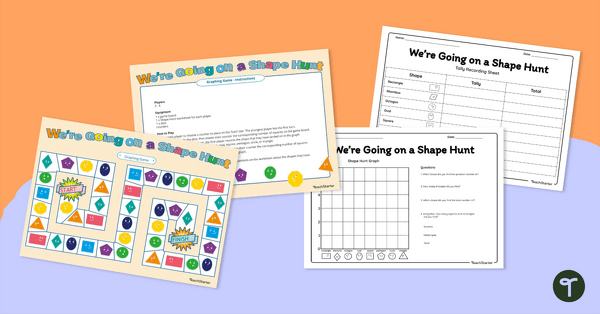
We're Going On a Shape Hunt! Graphing Game
Consolidate students' knowledge of 2D shapes while teaching about data collection, recording and graphing!
- Free Plan
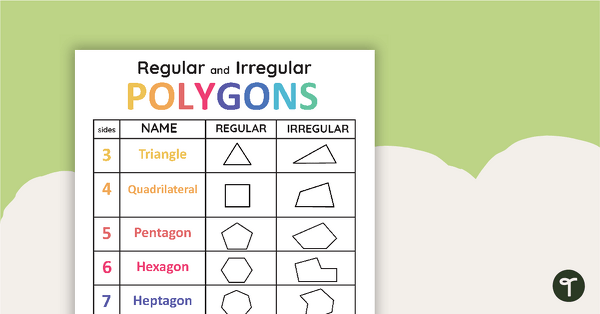
Regular and Irregular Polygons
Use this teacher-created resource for teaching about regular and irregular polygons.
- Plus Plan
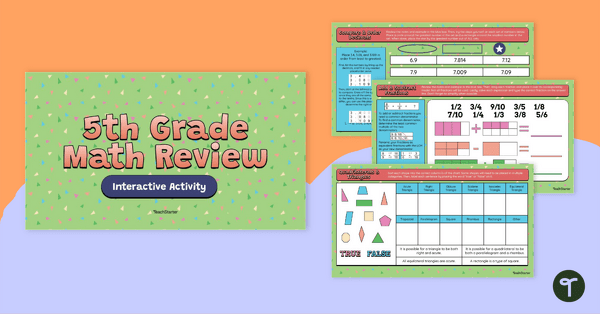
5th Grade Math Review – Google Slides Interactive Activity
Review important 5th-grade math standards with a student-led interactive activity that covers 12 different mathematical concepts.
- Plus Plan
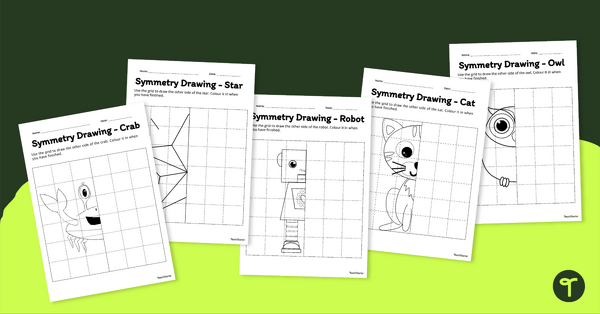
Symmetry Drawing Worksheet Pack
Teach your students about symmetry using this series of drawing worksheets where they must copy an image symmetrically using grid lines for reference.
- Free Plan

Mini-Mystery – Which Key Opens the Door?
Use knowledge of 2-D shapes and right angles to solve the mystery in this fun, logic-based activity.
- Free Plan

Free Shapes Worksheets for Kindergarten
Print your free Shapes Worksheets for kindergarten to practice shape identification.
- Free Plan
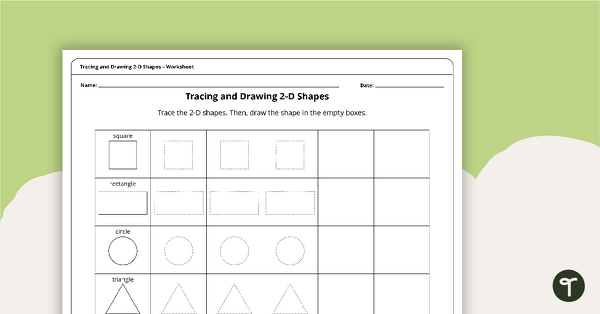
Tracing and Drawing 2-D Shapes – Worksheet
A simple trace and draw worksheet for 2-D shapes.
- Plus Plan
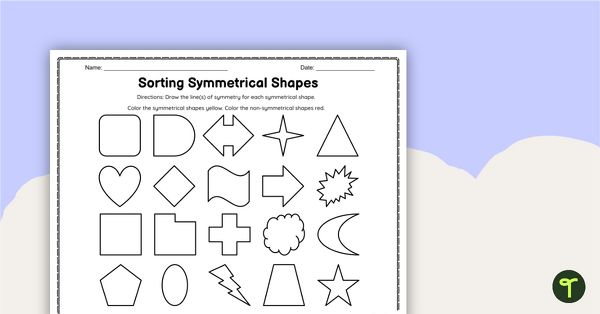
Sorting Symmetrical Shapes Worksheets
Use this simple but effective symmetry worksheet to reinforce the concepts of symmetrical and asymmetrical shapes with your Fourth Grade students.
- Plus Plan
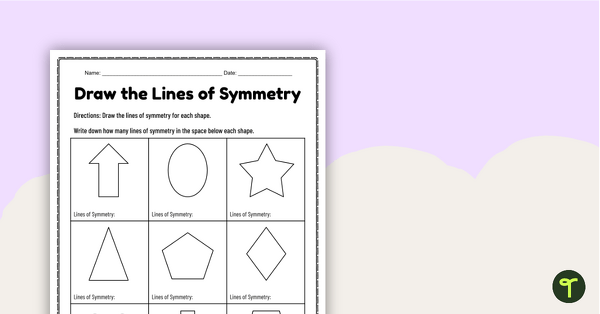
Draw The Line of Symmetry Worksheets
Use this lines of symmetry worksheet to help students practice drawing lines of symmetry on 2D shapes.
- Plus Plan
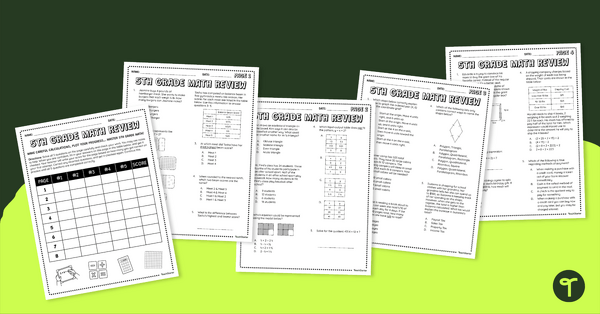
5th Grade Math Review – Test Prep Packet
Encourage your students to work through 8 pages of 5th-grade math problems while charting their progress to measure their success.
- Plus Plan
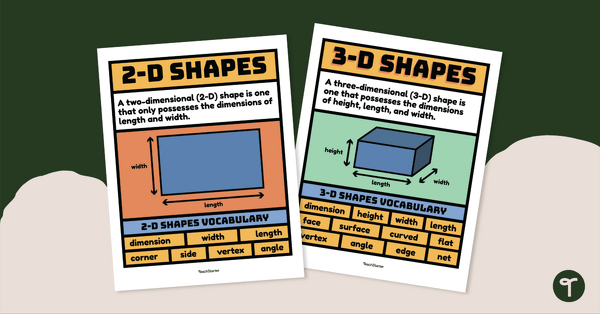
2D and 3D Shapes Vocabulary Poster
A poster that explains 2D and 3D shapes and lists associated vocabulary.
- Plus Plan

Lines of Symmetry Teaching Slides
Introduce your students to the concept of lines of symmetry using this comprehensive and easy-to-understand 12-slide teaching presentation!
- Plus Plan
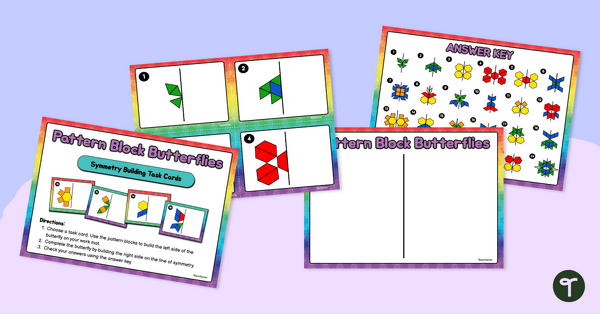
Pattern Block Butterflies Symmetry Task Cards
Bring some colorful fun into your classroom with these symmetry butterflies, a hands-on learning activity for young students to explore the concept of symmetry.
- Free Plan
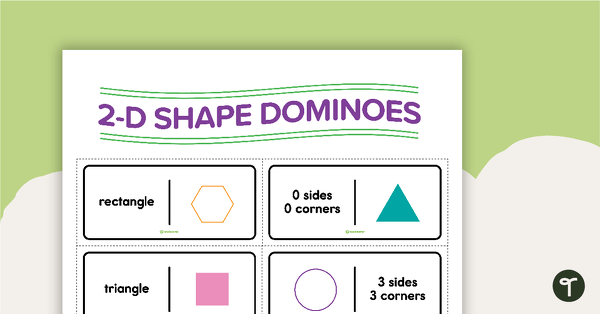
2-D Shape Dominoes
A set of dominoes to help students with their understanding of 2-D shapes.
- Free Plan

2D and 3D Shapes Crossword with Solution
A crossword with clues for both 2D and 3D shapes.
- Plus Plan

2-D Shapes with Information - Poster
A 2-D shapes poster with 16 common shapes, as well as information characterizing each shape.
- Plus Plan
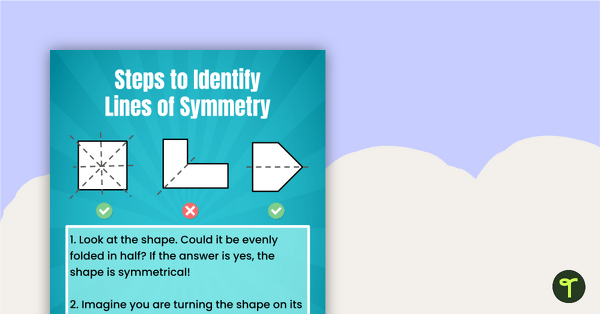
Identifying Lines of Symmetry Poster
Display this poster in your classroom as a reference tool for students to learn to identify lines of symmetry.
- Plus Plan
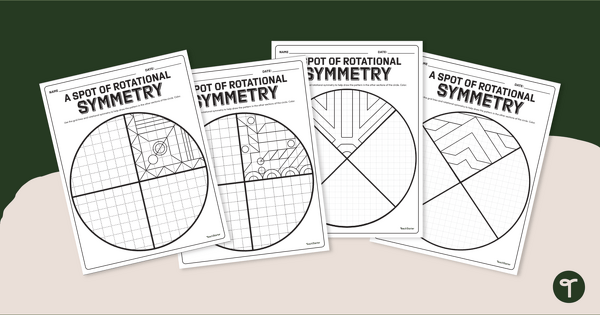
Exploring Rotational Symmetry Worksheets - Drawing Prompts
Encourage creativity and practice knowledge of rotational symmetry with a set of exciting symmetry drawing worksheets.
- Free Plan
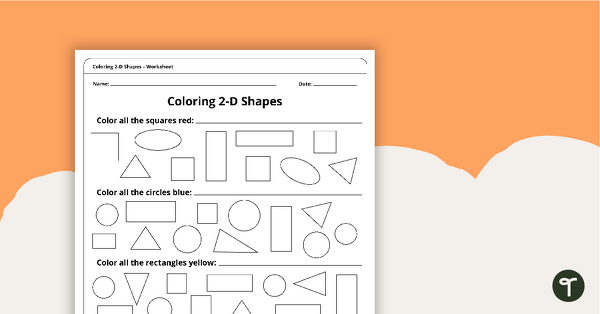
Coloring 2-D Shapes Worksheet
Practice identifying rectangles, squares, circles, and triangles with this 1-page worksheet.
- Plus Plan
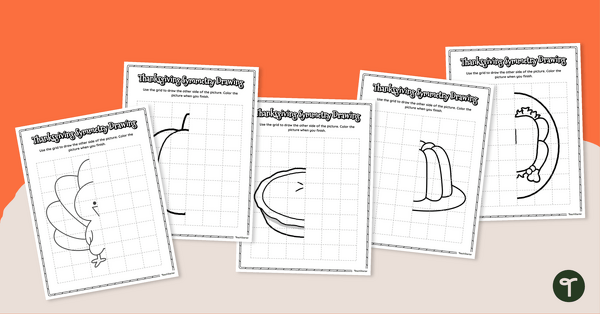
Thanksgiving Symmetry Worksheets
Explore symmetry with these Thanksgiving drawing symmetry worksheets.
- Plus Plan
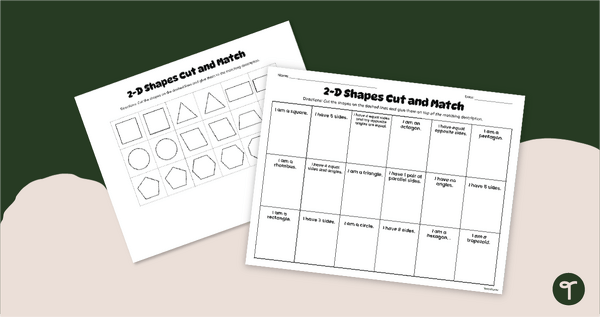
2-D Shape Match
A fun match-up activity to consolidate your students’ knowledge of 2-D shapes and their attributes.
- Free Plan

Color by 2D Shape - Egg
Practice identifying shapes and colors with this one-page worksheet.
- Plus Plan
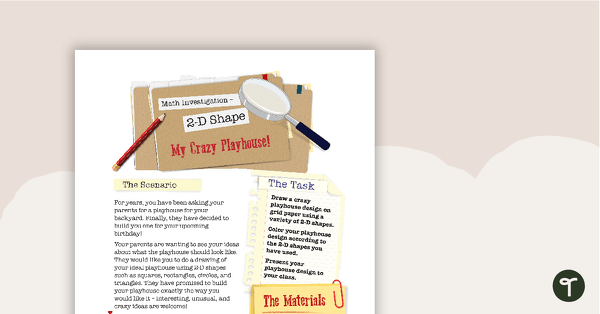
2-D Shape Math Investigation - My Crazy Playhouse!
A mathematics investigation involving 2-D shape, embedded in a real-world context.
- Plus Plan

2D and 3D Shapes - Cut and Paste Worksheet
Learn the difference between 2D shapes and 3D objects with this cut-and-paste worksheet.
- Plus Plan
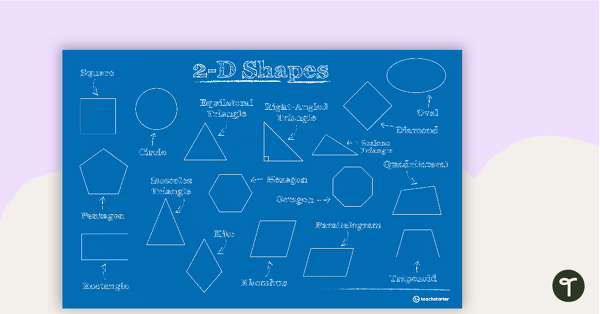
2-D Shapes – Poster
2-D shapes and their names on one poster.
- Plus Plan

2-D Shape Bingo
Engage your students while consolidate learning about 2D shapes, their names and properties with 2D Shape Bingo!
- Plus Plan
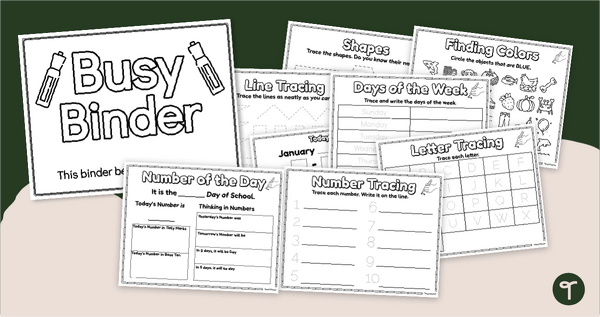
Busy Binder - Kindergarten Morning Work Activity Book
Review daily calendar, math, literacy, and fine motor skills with a printable kindergarten Busy Binder workbook!
- Plus Plan
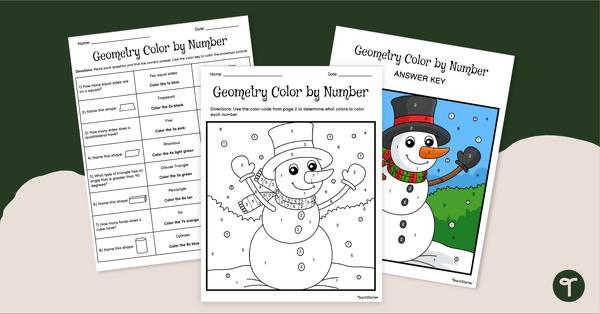
Color by Number Christmas - Geometry Worksheet
Use a Color by Number Christmas Geometry worksheet to practice classifying 2D and 3D shapes.
- Plus Plan

Line of Symmetry 2D Shapes Interactive Activity
Engage your students in a variety of interactive activities all focused on the line of symmetry for 2D shapes.
- Plus Plan

Matching Lines of Symmetry Worksheets
Introduce the concept of ‘multiple lines of symmetry’ to your Grade Fours with this match-up worksheet set.
- Plus Plan
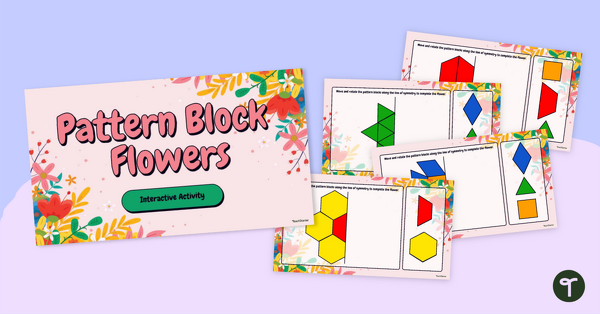
Pattern Block Flowers Interactive
Use this flower-themed interactive activity for your students to practice using manipulatives to create or expand on shapes using a pattern or symmetry model.
- Plus Plan
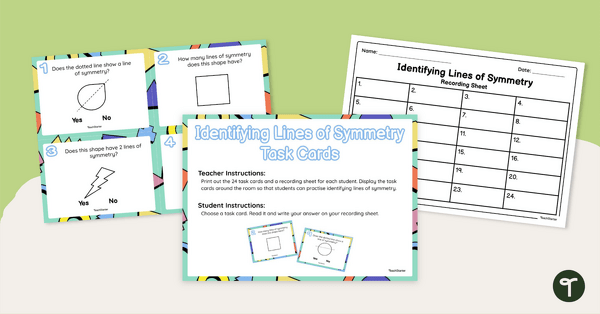
Identifying Lines of Symmetry Task Cards
Use this set of 24 task cards to help your students practise identifying lines of symmetry in 2D shapes.